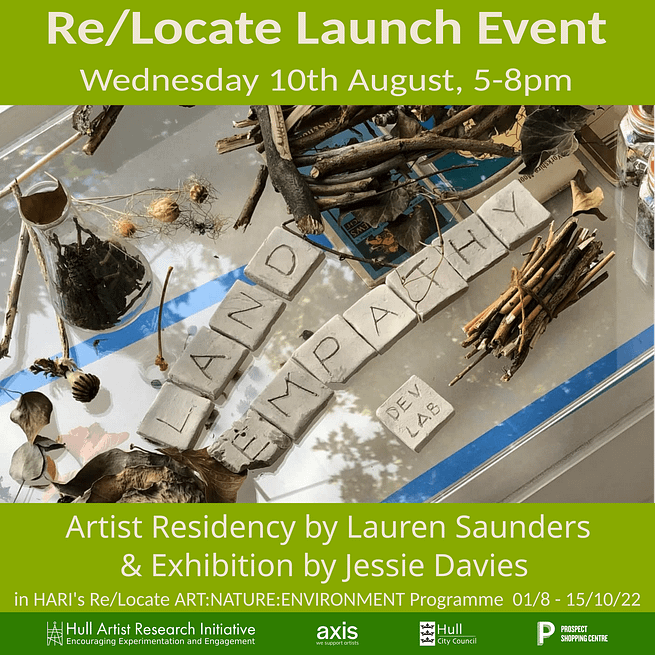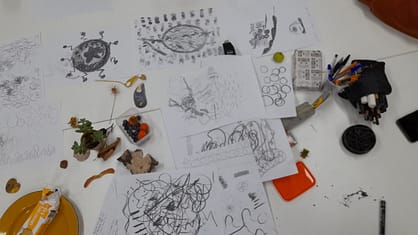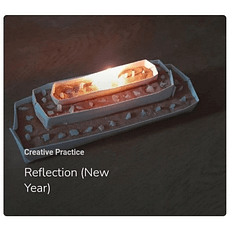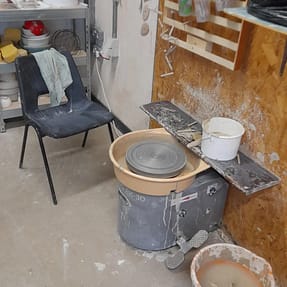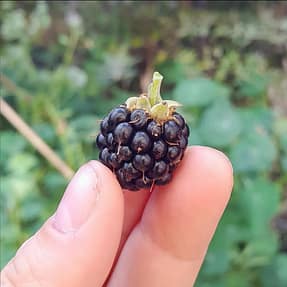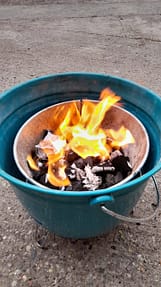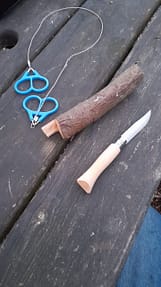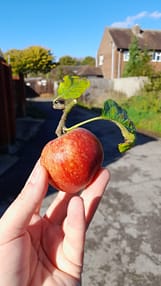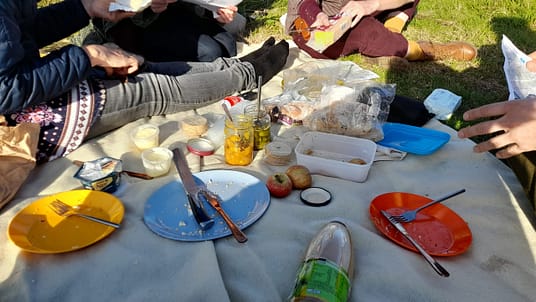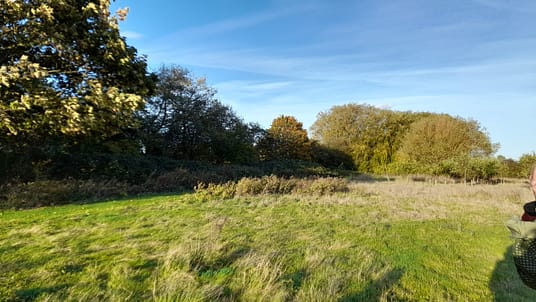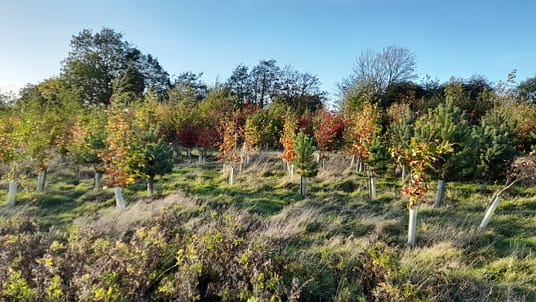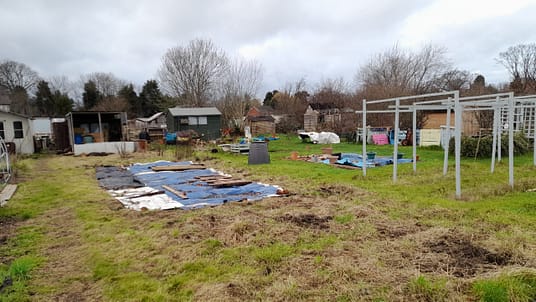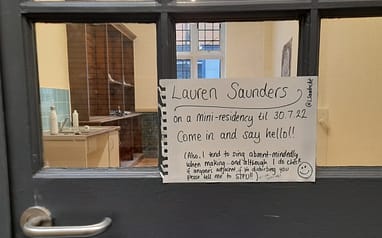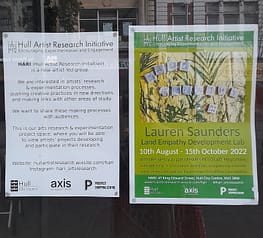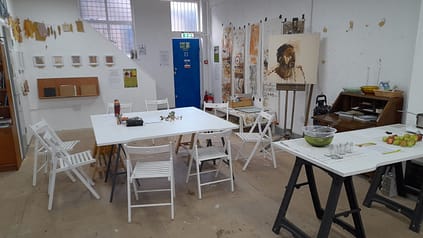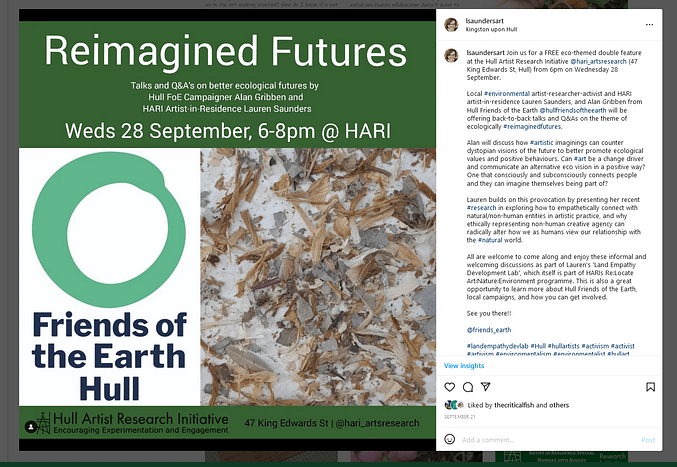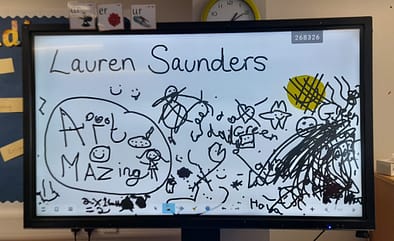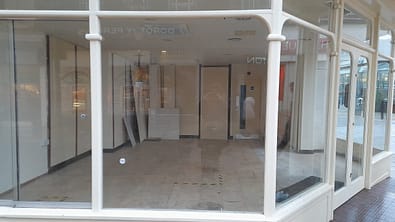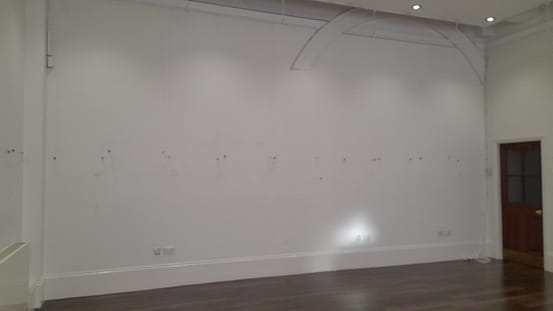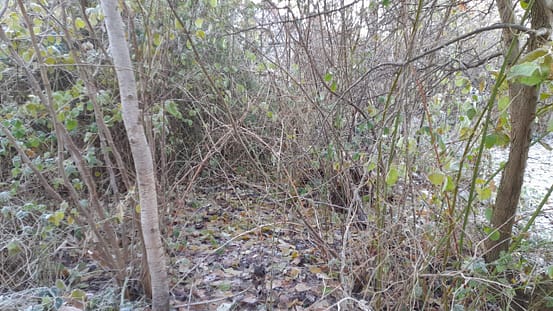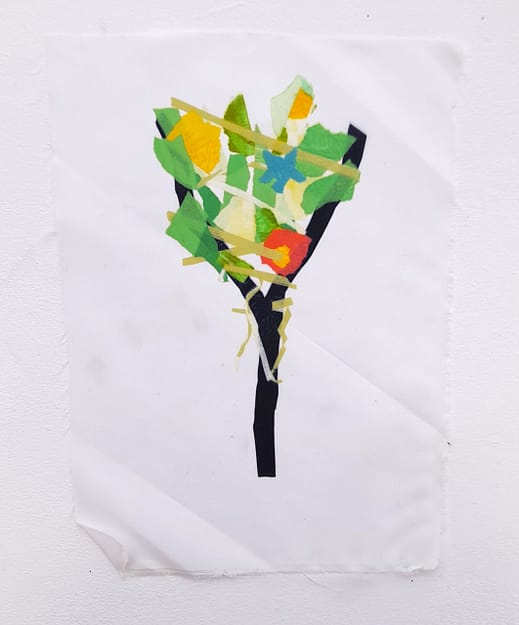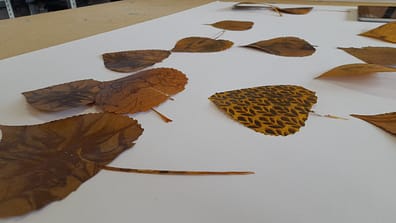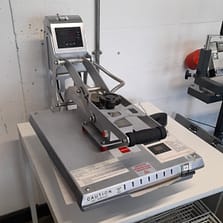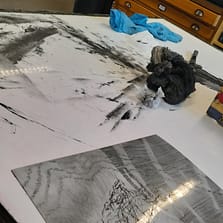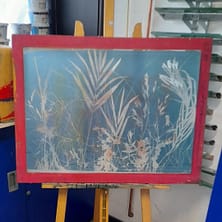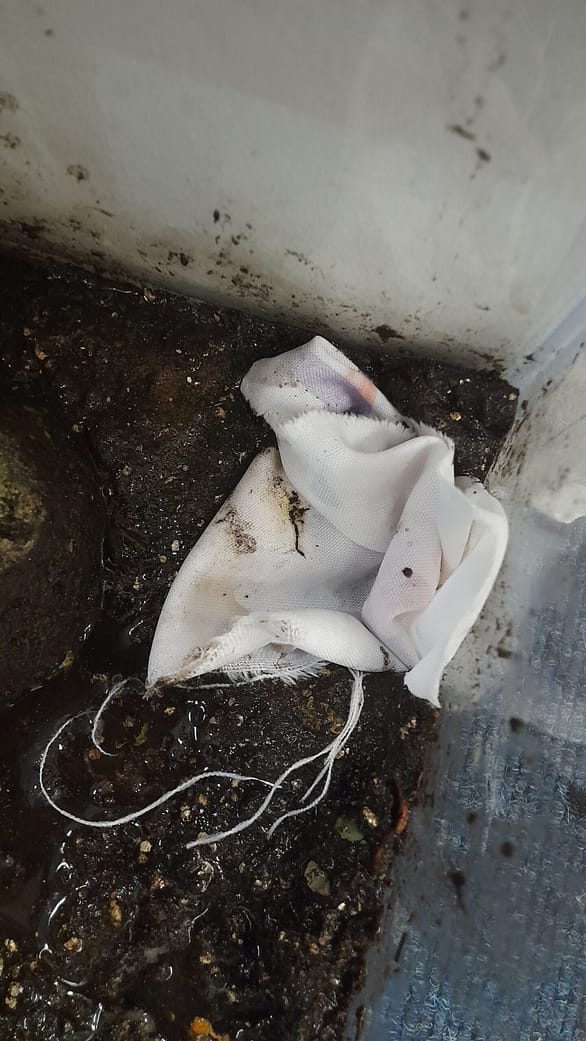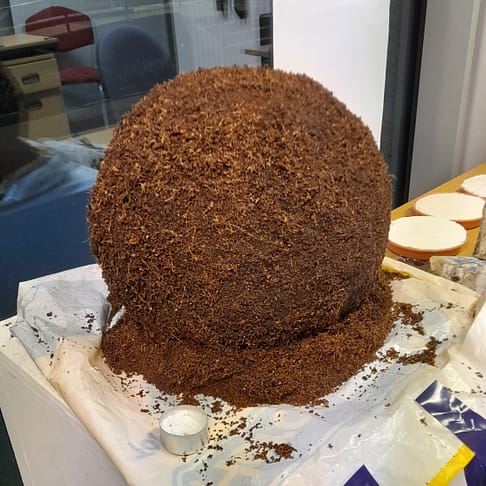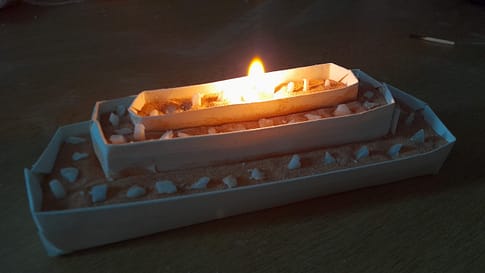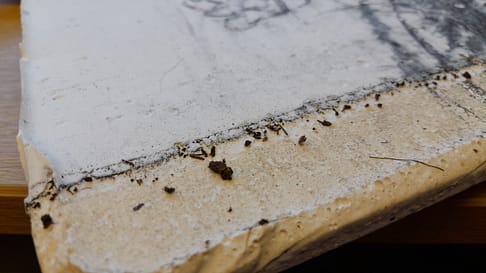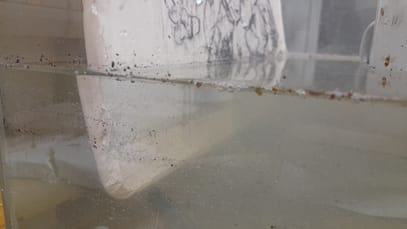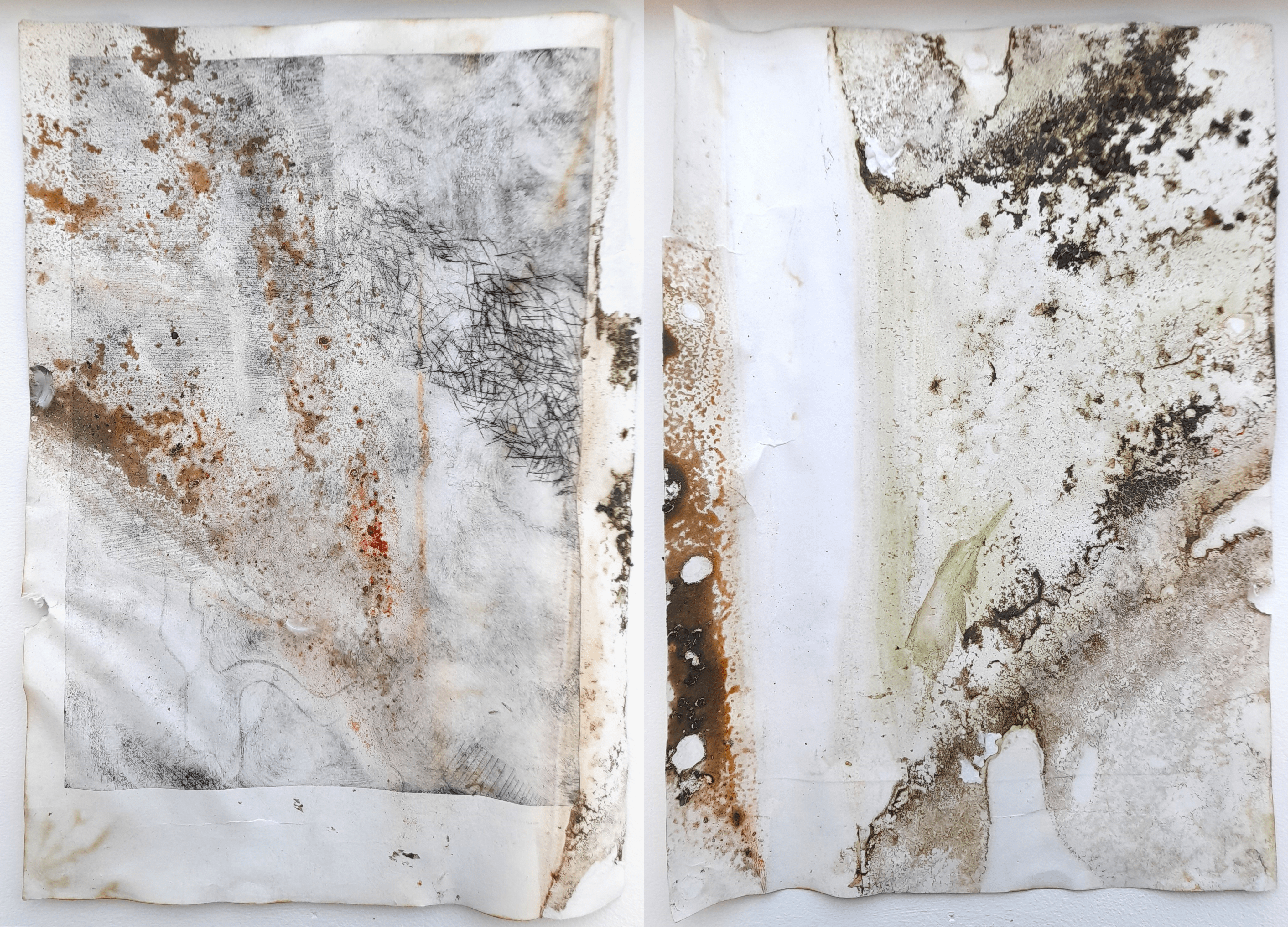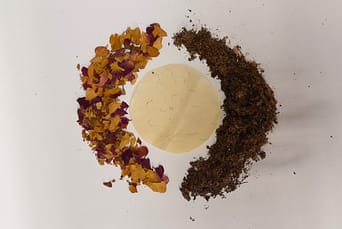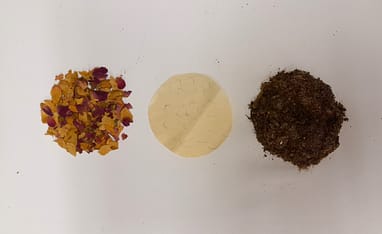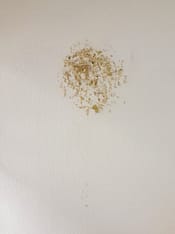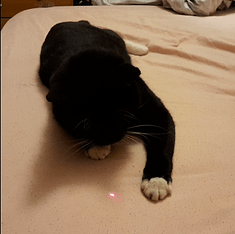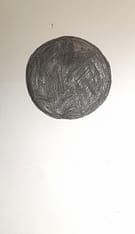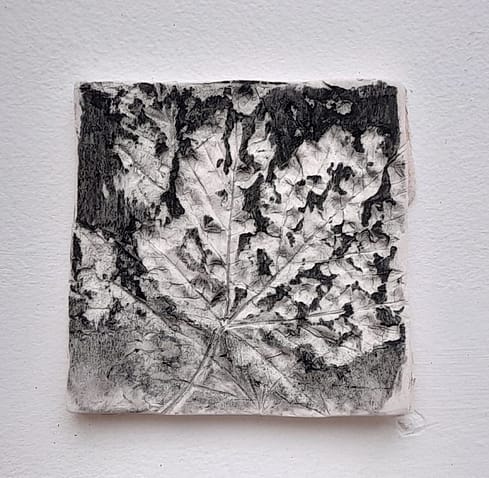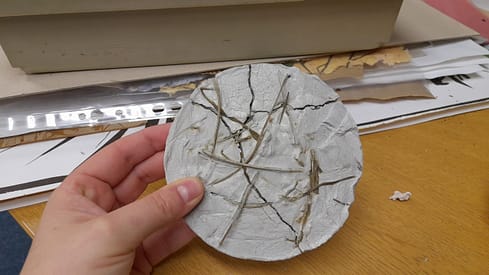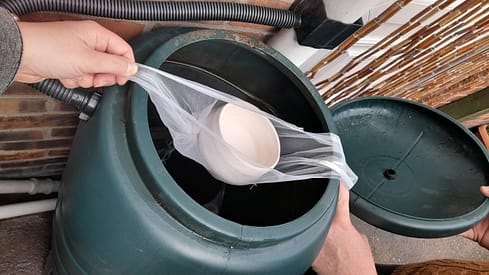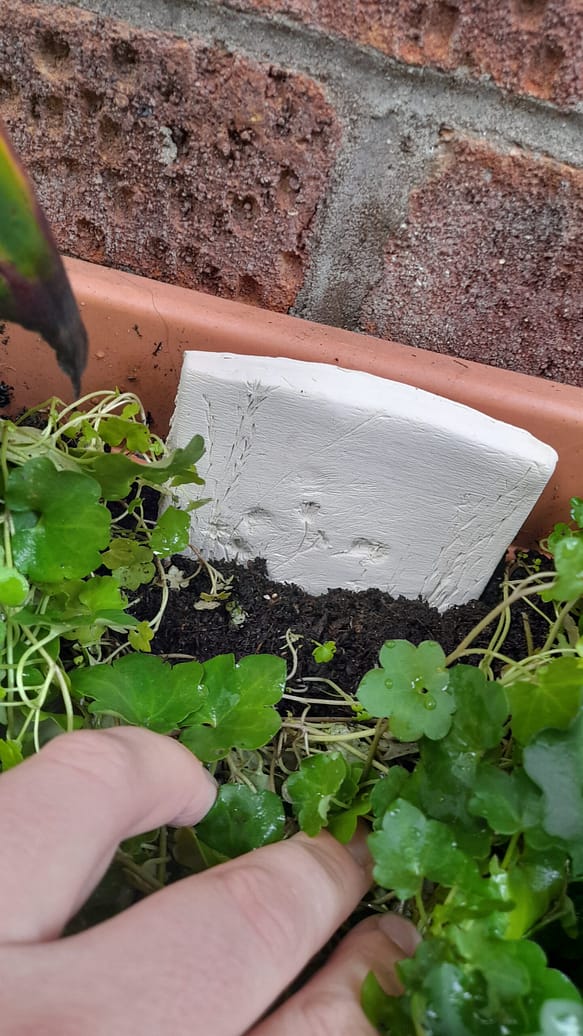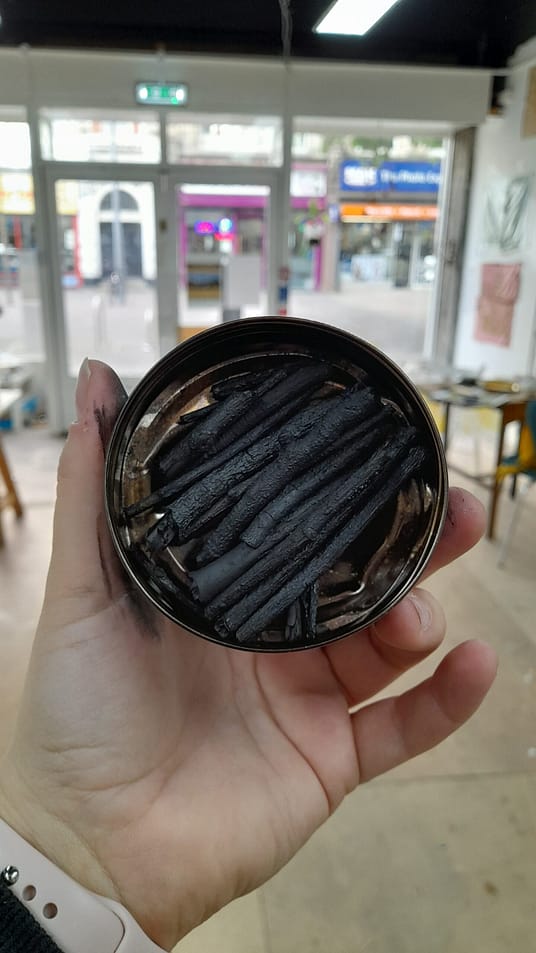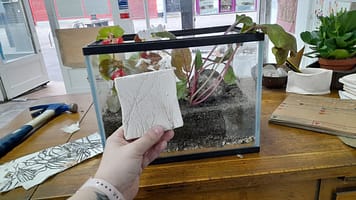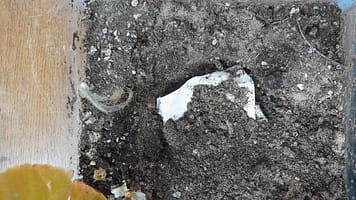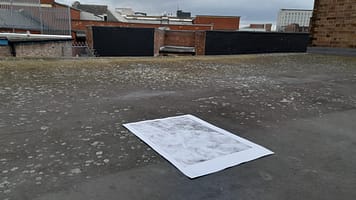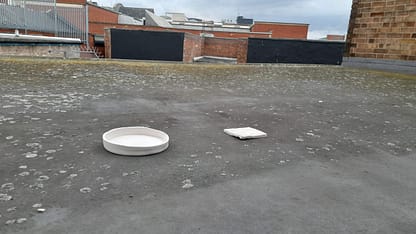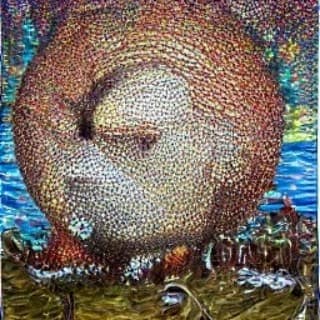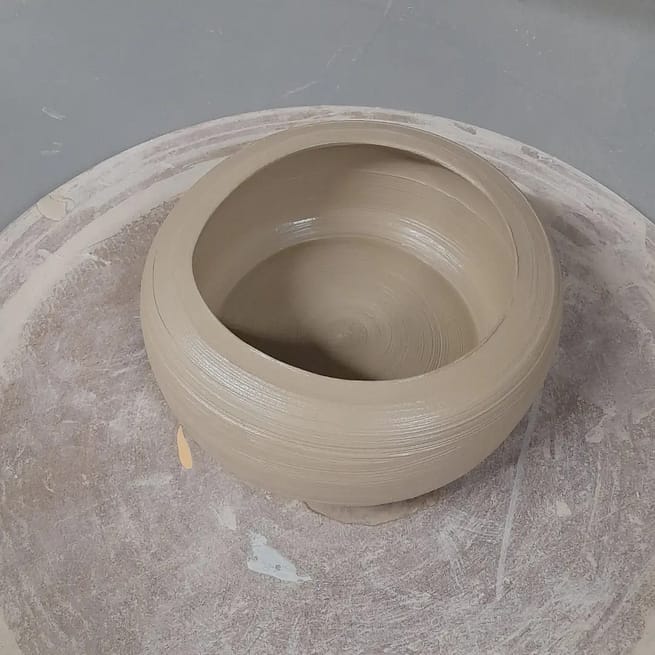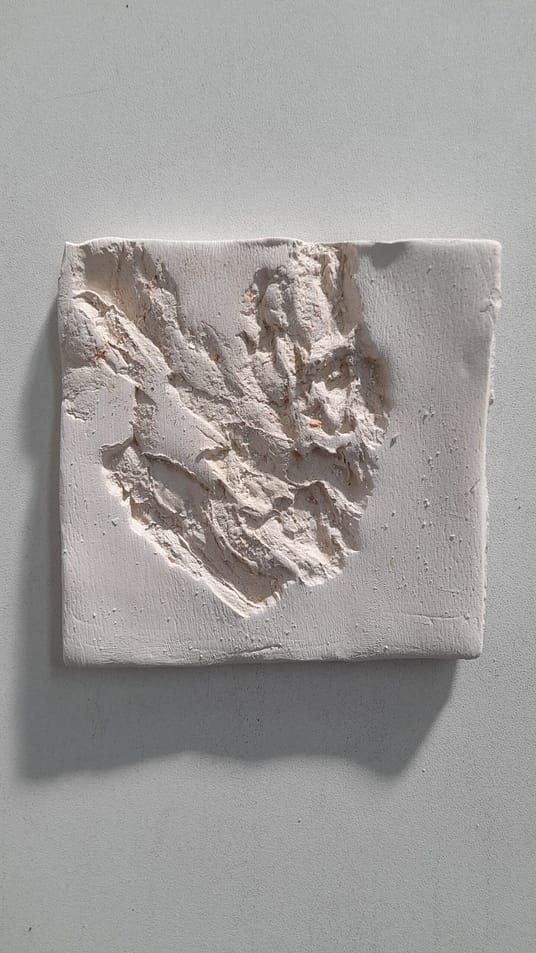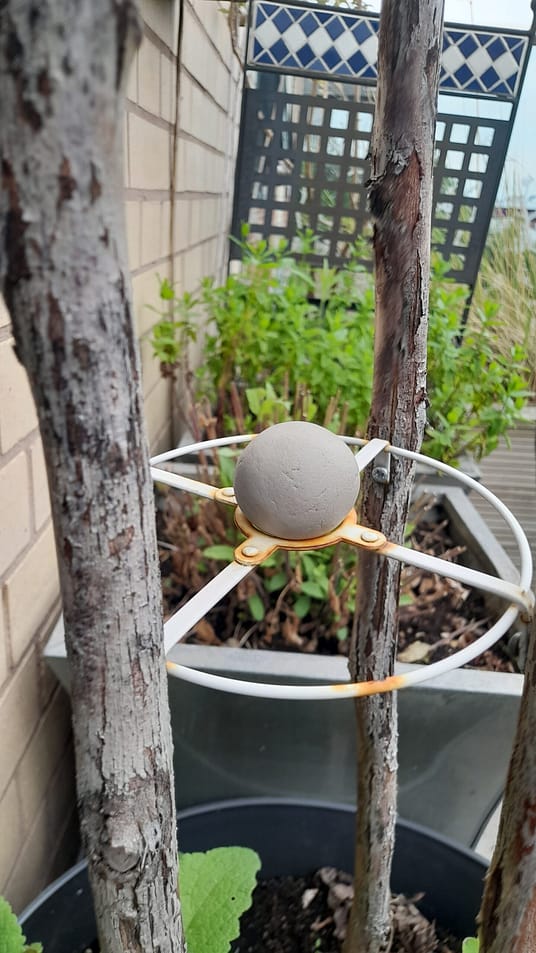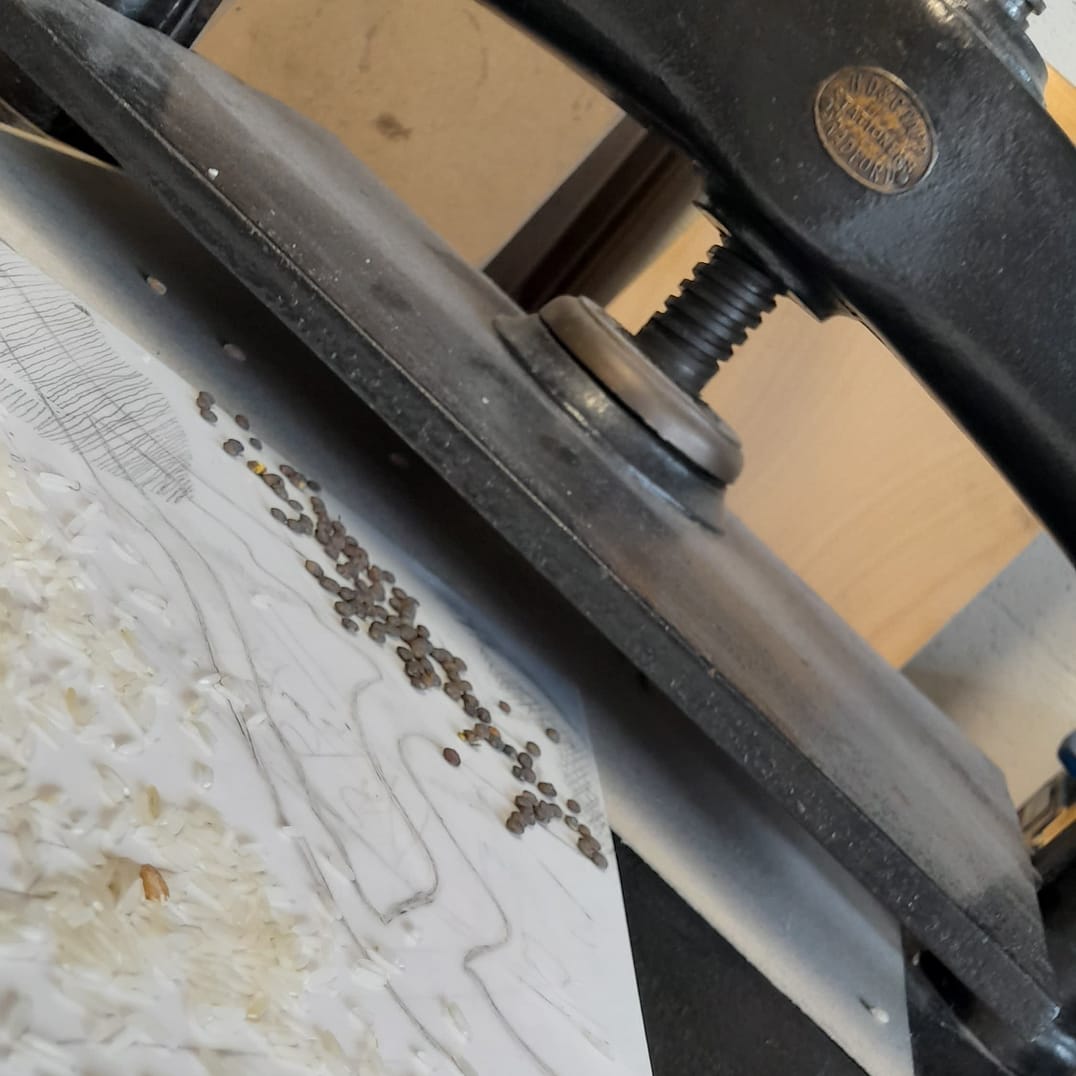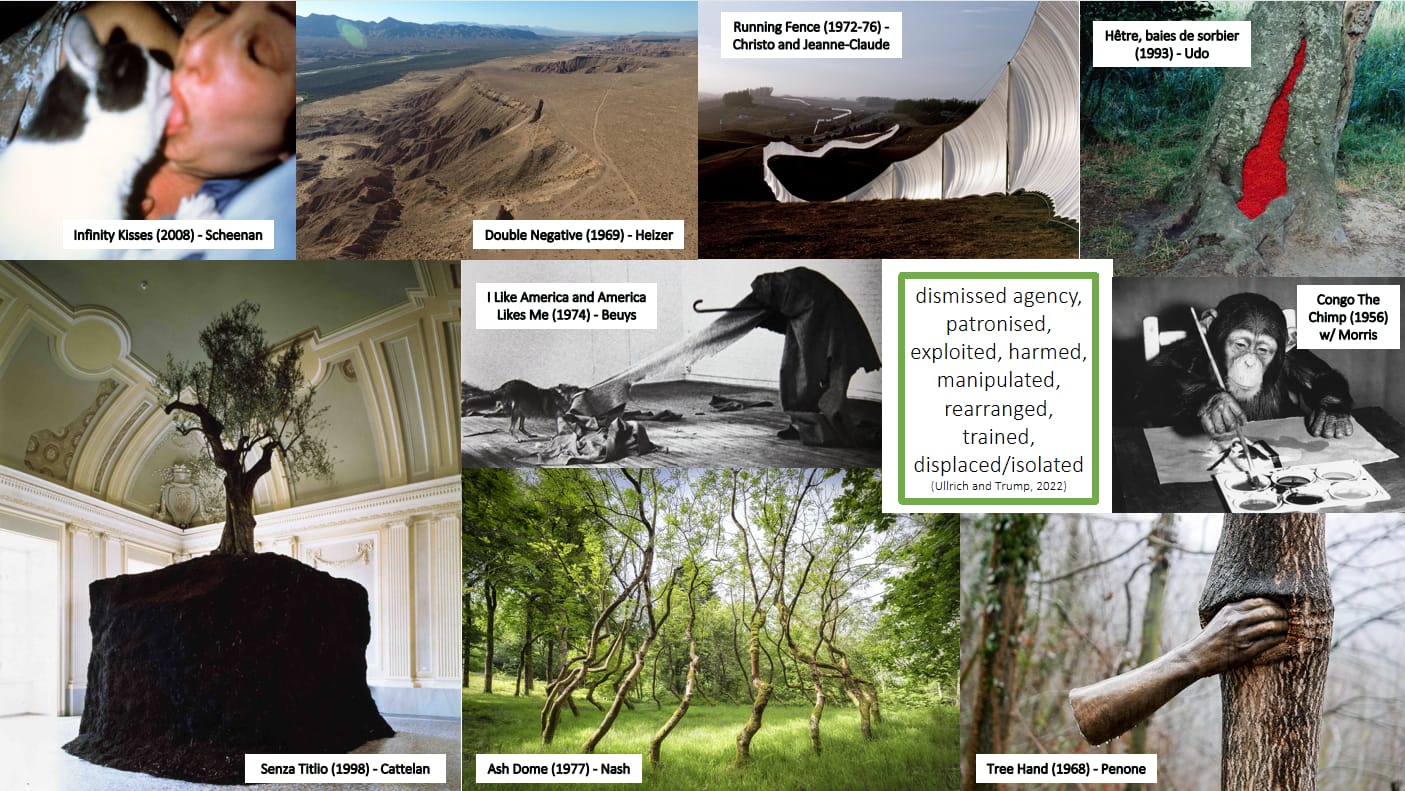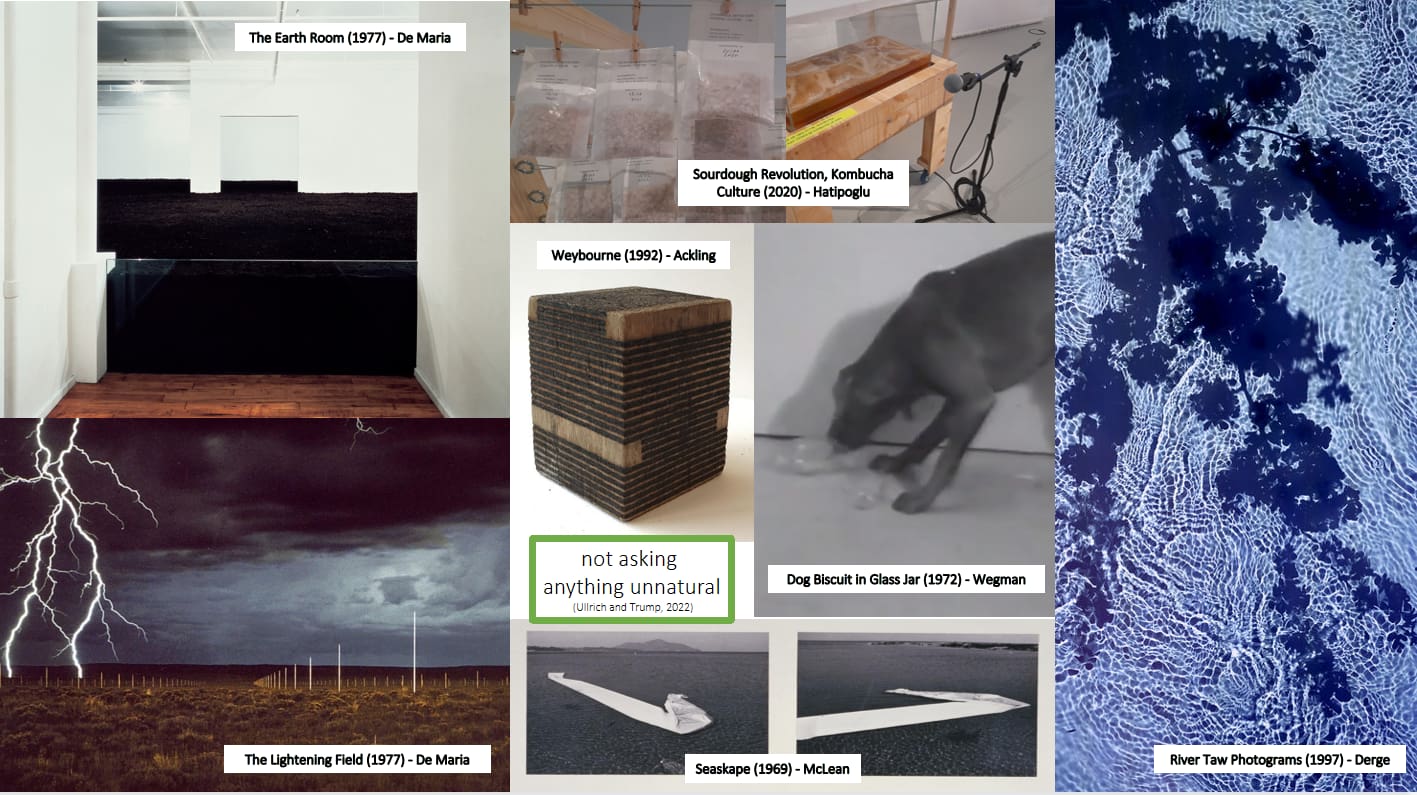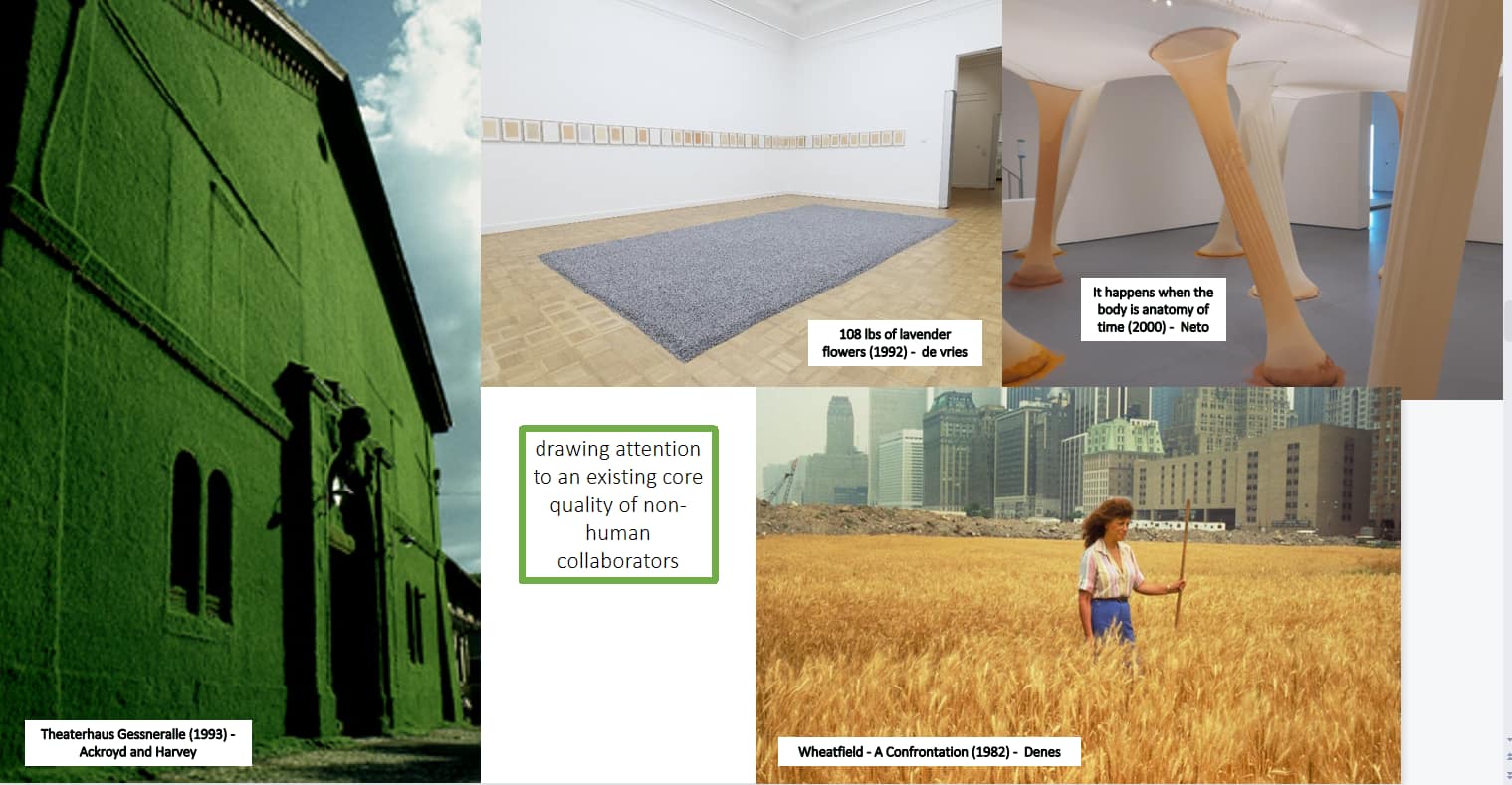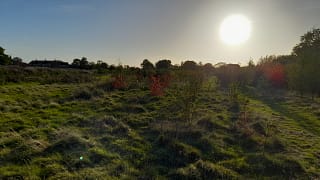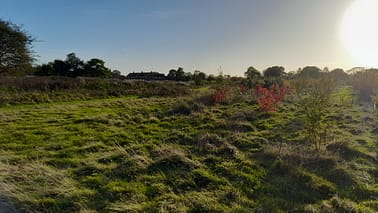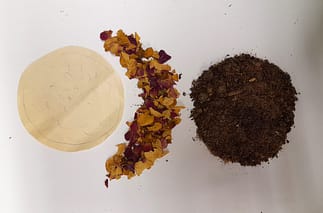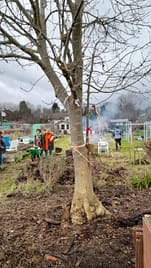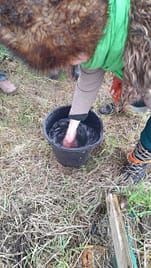I wrote a post back in April explaining how my practical work at the time connected to the theory I had researched within my Literature Review. It was very helpful to bring disperate ‘on-the-go’ posts on Instagram – where I couldn’t really reference theory/provide links easily – to other random blogs, practical work and meaningful evaluation/reflection.
Well, six months later, my research has evolved, my practice has evolved, so I’m doing something similar to keep things up-to-date (and to support my MA Module 4 submission, of course) in light of my journal article, Ethical Art-Making – Human:Non-Human Creative Collaborations and the posting of things using the hashtag #macp4 to Instagram.
I reference sections from my literature review and journal article in italics, and will continue to include the coding system that I used in my first Meta-post back in April, which will further help connect theory to practice throughout my entire MA journey (as opposed to simply between Module 3 and 4). I’ll refrain from repeating myself too much, as much of what I’m doing now sits under the umbrella of Geopoetics (so it’s all still relevant), but I have directly copied and pasted key theory from my previous Lit Review/meta-post for the benefit of any new readers (this is indicated in text). Examples of work shown, however, is all new and dated from around June 2022 (when Module 4 organically started for me).
My overall conclusion from my Literature Review ‘The Geopoetics of Drawing’ was that the “Creative, scientific, material, existential, emotional and spiritual transformation – on which the survival of humanity relies – requires an integrated both/and approach to all three.”. Within the Module 2 minor project, I chose to focus predominantly on understanding, connecting to and creatively collaborating with the non-human. In practice, this took many forms that touch upon a number of key themes highlighted throughout the review.
Since then, I wrote my Journal Article, exploring ways on which to most ethically develop these collaborations, which has informed my thinking and it’s where I am now. This was originally posted in early October 2022 but I’ll continue updating it as I make more work.
NEW Theory and Coding, as identified in my journal article Ethical Art-Making – Human:Non-Human Creative Collaborations, build directly off two specific thematic branches:
HNH02 – Refers to the ethical practices behind Human:Non-Human Creative Collaborations, Actor Network Theory, Inter-species Communication, Animist Psychicism etc. Differs from HNH01 as this is more interested in the HOW rather than the WHAT when it comes to making art in collaboration with the more-than-human.
STEK02 – Refers to intuitive practices, earth-based ritual, Riverspeaking etc. Not too different from STEK01.
I’ve continued to include obvious examples of previous themes where they’ve arisen in practice (everything is still relevant and interconnected anyway), but only referencing examples of work to NEW theory as to avoid repeating myself from my previous meta-post. Much of what I’m doing speaks to multiple themes as well – it does feel very poetic.
There is a difference to HNH01 and HNH02, as HNH02 feels more the HOW rather than the WHAT, but I’m bundling them together anyway.
Let’s get on with it. This post should also be read in tandem with my final evaluative blog post.
Overarching theories (Lit Review): Geopoetics and Dark Green Spirituality (GDGS01)
- The Scottish Centre for Geopoetics (Bell et al, 2020, p.2) offers 7 key defining elements of geopoetics: an epistemological centring of Earth; a heightened sensory and noetical awareness of Earth; an intention to overcome dualistic mind:body and human:non-human distinctions; learning from others who have sought a new approach to thinking and living; a creative, geological, geographical, philosophical, scientific or otherwise multidisciplinary expression of the Earth; multidisciplinary contributions to the wider geopoetical discourse; and, the potential for radical individual, cultural and societal renewal.
- As a multidisciplinary composite field of action, inquiry (Skinner, 2020; White, 1994b) and route-finding creative theory-practice, geopoetics encompasses multiple, holistic, creative manifestations (Magrane et al, 2020; Magrane, 2021; White, n.d.a) of: geography (Madge, 2014); space, place and landscape; language; ecological anthropospherics; Noospherics; the Anthropocene; the more/other-than-human; the human-non-human interchange and the reimagining and equitable resetting of human-nature relationships (Brownlow, 1978, cited in Ryan, 2020, p.104; Madge, 2014; Magrane et al, 2020; Magrane, 2021), any of which can be expressed creatively scientifically, existentially, emotionally and/or spiritually (Golańska and Kronenberg, 2020).
- There are three interwoven pathways to understanding the earth and kinship ethics; direct experience in Nature, the sciences and the arts (Taylor, 2021).
- Lovelock’s (1972, cited by Taylor, 2011, p.14) science-based Gaia hypothesis has been influential within “dark green” spirituality, which Taylor (2011) considers to be religion-like beliefs and practices defined by the intrinsic value of nature. Many different experiences and insights lead towards these “dark green” cosmovisions – which includes but is not limited to: cosmogony, religion, perceptions of belonging to nature, a sense of interconnected mutual dependencies, place-based human humility, environmental intrinsic valuations, kinship and loyal affection for the Earth (Taylor, 2011; 2021).
My entire practice sits within these definitions – connecting to and expressing the Earth in a multi-disciplinary way. The ethical weight I place on my practice situates it quite firmly as an expression of ‘Dark Green Spirituality’. In practice, this involves: Making:drawing, walking, gardening, direct action (e.g. seed bombing), sharing practice, meditating, free-writing:drawing, tarot, herbalism, human:non-human creative collaborations, professionally and personally connecting with related and supportive organisations”
Direct Action (DA01)
Links to GDSG01, EE01, EPP01, HNH01, and SP01.
This has recently been more about dissemination (e.g. talks, workshops, blog posting) and as opposed to gardening/growing (this is a lot to do with seasonality).
Theory (Lit Review) |
Practice |
| Wilson (1984, cited in Taylor, 2021, p.36) described art as a tool for discovery and artists as ‘expert observers’, both of which are able to instruct society through aesthetical ‘pleasing’. | Gardening, drawing, meditation… and sharing my practice through residencies, events, artist talks, working in schools, online social media and blogging. “I’m deepening my relationship with nature and showing how to positively engage alongside and within it.” |
| We can better discern and reply to the complex needs of the more-than-human by moving beyond mere ethical principles to embodied ethical practices (Alaimo and Hekman, 2008, cited in Coleman, 2016, p.88). | Gardening, guerilla gardening, meditating, walking, making, campaigning (Hull Friends of the Earth), making ethical professional practice decisions. “Working directly with nature (e.g. domestic and guerilla gardening) is a method of direct action in itself. Direct, sensual experience helps to understand the cycles, balance and needs of nature. These embodied observations shape my ethical compass (i.e. principles) and in turn, the duty I feel to take direct action and other creative moral decisions (i.e. ethical practices).” |
| Influenced by Dewey, pedagogist Ho-Chul Lee developed a ‘living drawing’ approach to underline the relationship between aesthetic experiences and moral education. Through drawing practices, emotion, imagination and embodied reason were demonstrated to promote empathy, leading to moral reasoning and in turn moral action (Kim, 2016). | Drawing!
Both myself, and using drawing as the vehicle in both residency workshops at HARI (independent ones and ones with the NHS Humber Recovery College) and Elloughton Primary School. |
Experience and Embodiment (EE01)
Links to GDGS01, DA01, HNH01, SP01 and STEK01
Being in and with nature.
Theory (Lit Review) |
Practice |
| Whitehead (1929, cited by Sjöstedt-H, 2016) suggests a panexperientialist philosophy of organism, in which perception is shared by both object and viewer in a synthetisation of mind and matter. Although Western science rejects such anthropomorphism on grounds of epistemological humility (Taylor, 2021), Caracciolo (2014, cited in Ryan, 2020, p.112) counters consciousness-attribution with consciousness-enactment, suggesting that subjects (e.g. a rock, animal, plant, landscape) can communicate in the first person by granting the reader access to its mind. Similarly, Abrams (1997) explains how the mind is understood by the Navajo people as a participatory wind as opposed to a personal possession. Therefore, all elements within an inhabited ecosystem contribute to a state of mind, which in turn, is the source of shamanistic/sorcerer gifts. | Meditation/Listening and free writing:drawing. Engaging in telepathic and intuitive practices. “These practices encourage a shift in thinking, and spiritual:intellectual communication with the non-human.” |
| Alaimo (2010, cited in Coleman, 2016, p.88) emphasizes the mutual entanglement of the human:non-human through literal, permeable contact zones, supporting Bachelard (1958), Lowenthal (1961, cited by Magrane, 2015, p.87-88), and White (n.d.a), who argues that it is essential for Geopoets to maintain contact between thought and feeling, idea and sensation, further underlining the importance of imagination rooted in earth-based lived experience. | Gardening, meditating in nature, using natural materials, exploring traditional ways of making (e.g. whittling, charcoal burning), walking, foraging, |
| Dewey (1934, cited in McWilliam, 2008, p.32) argues that aesthetic beauty emerges from the relationship between individual and object, in what he calls ‘the experience’. The senses – of which touch is the most dominant for artists (Eames, 2008) – are the keys to experiencing the ‘landscape from within’ (Jokela, 2008). | Gardening, making using natural materials, drawing, doing, foraging, sitting. |
| Jokela (2008) reflects on the meditative, holistic and aesthetic significance of space:time interactions with nature (e.g. hunting, foraging), by examining the environment in regards to objective, emotional and textual meaning. | Gardening, #foraging265, walking |
| Nature Connectedness is a field of psychological inquiry that investigates these subjective relationships with the world via contact, emotion, compassion, meaning and beauty (Lumber et al, 2017). | Gardening, meditating, making:drawing, walking, foraging, community projects |
Ethical Professional Practice (EPP01)
Links to GDGS01, DA01 and EE01
Similar to DA01 most recently (in terms of dissemination) but also about the professionalisation of practice (e.g. residencies, teaching on the subject in schools, workshops, and searching for exhibition spaces) and the development of paid project work (e.g. A Space to Be, Shorelines). For me, this theme has also been about exploring the what NOT to do, what DOESN’T feel right to do.
Theory (Lit Review) |
Practice |
| …an intention to overcome dualistic mind:body and human:non-human distinctions; learning from others who have sought a new approach to thinking and living;multidisciplinary contributions to the wider geopoetical discourse” (Bell et all, 2020) |
Adopting more holistic approaches to practice, looking at new related artwork, reading relevant texts, sharing practice, discussing themes (e.g. in CRAG), teaching in schools, engaging with residencies, doing artist talks, engaging with other professional organisations and community groups. |
| We can better discern and reply to the complex needs of the more-than-human by moving beyond mere ethical principles to embodied ethical practices (Alaimo and Hekman, 2008, cited in Coleman, 2016, p.88). | Professional practice decisions, really thinking about what materials and processes I’m using.
Identifying what processes ARE more environmentally ethical and which ones ARE NOT (e.g. sublimation, printing, plucking or collecting items when #foraging) Figuring out the least impactful way of putting on my MA exhibition (e.g. borrowing, renting, sustaining life within) |
| Analogous to Nietzsche’s metaphysical concept of the artist-philosopher (White, n.d.b), artistic practice is a disruptive process of generating research that challenges dualistic approaches to knowledge that embraces new ways of thinking (Golańska and Kronenberg, 2020). | Making, doing and being. |
| Local identity and tradition, which are often rooted in earth-practices, are also enhanced and/or (re)constructed through the artistic embodiment of moving through nature (Jokela, 2008). | Embedding heritage and local knowledge into professional work by working alongside local schools, cultural and activist organisations and community groups – local identity has been key in developing community projects. |
| However, when working within communities whom do not share one’s culture, race, language, country and/or history, it is essential to adopt a decolonised approach in order to navigate difficulties surrounding ethics, power and representation (McGiffen, 2020), as the Western approach to environmental catastrophe circles the novelty of disaster rather than acknowledge the associated historical continuity of dispossession and crisis caused by colonialism (DeLoughrey, 2019). | Accessibility, inclusion, rebalancing of power.I’ll be working co-creatively with various under-represented groups within my upcoming community projects (which I’ll be exhibiting). I’m keen to promote those voices as part of the climate conversation alongside my own and that of the environment. |
Human:non-human creative collaborations (HNH01 and HNH02)
Links to GDSG01, DA01, EE01, SP01 and STEK01.
This has been my key focus this module. The key difference than before is that this has been very focused on the intention of making work (i.e. consent, permissions, respectful working), and the associated shift in thinking (which is obviously near impossible to capture in photo or film).
Theory (Lit Review) |
Practice |
| Understanding natural phenomena as independent agencies, in which they are ‘active’ cocreators of knowledge (Barrett, 2014, cited in Golańska and Kronenberg, 2020 p.307) invites philosophical-creative potentialities between human:other-than-human artistic collaboration (Magrane, 2015), such as Louise Bourque’s burial of film (Ryan, 2020). | Making artworks using naturally occurring materials, working with natural processes, burying works, submerging works, exposing works.
Mental shift of truly acknowledging the creative agency of the non-human and embracing what that means morally and philosophically. |
| Taylor (2021) builds on the transformational potential of Leopold’s (1949, cited in ibid. p.34) Land and kinship ethics in regards to the conservation of biological diversity; creative interspecies collaboration could potentially develop revolutionary levels of appreciation towards other species (Jevbratt, 2010, cited in Ryan, 2020, p.111). | As above. And making it as clear as possible in communication with others that this is what I’m doing / hoping. |
Theory / Artist Practice (Journal)
|
Practice |
| Whilst non-human beings have been creatively acknowledged, it is typically to use them as material or symbolic interfaces to produce something reflective of the ‘artist’s intentionality, intuition and interpretation’ (Cypher, 2017). Live animals appear ‘primarily as muse, motif, material, model and medium’, ‘consumed as exhibition pieces, manipulated as objects of study or pure spectacle, rendered as material or anthromorphised’ (Ullrich, 2019). They may also experience captivity:restraint:control, use human tools when ‘working’ in human environments, or made to engage in human behaviours without understanding the human context. In this way, non-humans frequently have their creative agency dismissed, anthropocentrically patronised or manipulated by artists (Ullrich and Trump, 2022).
Examples:
|
A Lesson in what NOT to do.
Intentionality. I haven’t made work which ISN’T manipulated, turned into spectacle, treat purely as ‘material’, or anthromorphised, nor kept collaborators captive, restrained or controlled, made to use human tools or engage in unnatural behaviours. I’ve been so careful – through intentionality – to make work which is as respectful and ethical as possible. This isn’t always possible (e.g. using cotton in my seed balls) |
| Non-human control seems to take one of three formats: a) rearranging/training/manipulating the non-human in pursuit of human-centric aesthetics… b) to aesthetically displace:isolate entities… or c) do both
Examples:
|
Another Lesson in what NOT to do.
Relinquishing control, avoiding displacement. This is very difficult to navigate as any interaction with the non-human or natural environment could be considered ‘manipulation’. I’ve narrowed manipulation down by trying to keep forms very simple/natural – such as using circle forms as opposed to complex human forms (e.g. hearts, figurative shapes) – and not trying to make things ‘just so’ or editing the documentation of interactions to suit human aesthetics. Keeping my interaction to a minimum where possible, and if I do make an interaction, to be as ‘light-footed’ as possible or do so for overall conservational benefit. |
| There are some Interspecies Artists that involve animal participation by framing natural behaviours – including sitting, staring, singing or colour-transitioning (Deleuze, 1998, cited in Ullrich and Trump, 2022) – or otherwise not demanding anything that is unnatural for the animal(s) involved (ibid.).
Examples:
|
I’ve not asked anything or anyone (my cat, dog, plants, seasons, sky etc) to do anything unnatural and embracing their natural behaviours as creative expression.
The only exception has been winding cotton around the seed ball for structural integrity, yet this was the most light touch solution possible and is only a temporary state. Embracing that the dog eating my artwork is him expressing his creative voice in a way that is natural to him. Again, this is another exercise in ethical intentionality BEHIND making work instead of WHAT the work is itself. |
| Other artists simply draw attention to a core quality of their non-human collaborators.The tactile, sensory phenomenological showcasing of natural ontologies.. offer an embodied opportunity to reconnect with a singular material:entity.
Examples:
|
Simplifying work as far as possible to keep the ‘voices’ of the more-than-human entities involved clear as possible.
Making work which just showcases the beauty and power of the entity. Examples: Seed ball, floor/wall test works, plaster: water: charcoal works, Creating relatively simple drawings for the non-human to impact upon. |
| Interspecies Art should be respectful, discursive, and empowering, where animals are given some agency (including to refuse), engaged with as equal artistic co-creators, whose ‘work’ is valued even though they still might inevitability serve as an anthropocentric, artist-ego-extending tool (Ullrich, 2019). | Patience.
I’ve generally not tried to control outcomes in any specific way (within artistic reason), and kept that thing about ‘being given agency to refuse’ has stuck with me – if an idea doesn’t work, or doesn’t happen naturally, then it’s okay, that entity doesn’t want to work with me. Again, this practice is around intentionality and a change in perspective. I intentionally/mentally consider collaborators and equals, and as such, I’ve been exploring how to give them credit in the development of work (e.g. refering to works as ‘Collaboration with…’) |
| Jevbratt (2009) proposes eco-sensitive collaborative methodologies, such as the use of protocols, limbic resonance, overlapping interference patterns and psychic communication (i.e. telepathy).
Examples:
|
Exploring these techniques in practice, during the making of work. Something I intend to explore further.
Noticing where these processes are happening. |
| Barrett et al (2021) argues for the validity of Intuitive Interspecies Communication (IIC), a physical and psychical two-way communicative process informed by ethical protocols defined by Penelope Smith (2004, cited in ibid. p.153).
|
Exploring this process in practice, as best as possible. Not necessarily in the co-creation of work, but exploring this as a concept/practice with my cat and dog, and the plants and trees I encounter each day. |
| Actor Network Theory (ANT) (Latour, 1996;2007; Nickerson, 2022) can be used to consider how the artistic selection of materials/actors may impact knowledge production (Cypher, 2017). ANT explains that supposed human qualities – such as agency, expertise, creative intention, symbolic meaning making or social relations – are entangled with and effected by all preceding influencing non-human actors (Mark, 2017). As humans:artists:researchers, we must not place ourselves at the centre of this network, but rather consider how to best to translate our positionality, power and interconnectivity as a player therewithin (Sheehan, 2011, and May, 2022, cited in ibid. pp.122-23). | Intentionality and Awareness.
Considering what sort of voice a given entity offers within a material conversation. Shift in thinking in terms of interconnectivity My entire practice seems to be around using my positionality and power (as a human living within a human society, which I could influence to varying degrees) to translate and communicate the needs of those without a (human) voice. |
Bad Practice:
Good Practice (but not necessarily the material itself or monoculturalism):
Site-specificity and Place (SP01)
Links to GDSG01, DA01, EE01, EPP01 and HNH01.
This hasn’t been of a particular focus, but the voice of specific places has been there in terms of where I’m exposing to the elements (predominatenly in my garden) and in the development of upcoming projects (which obviously I can’t document or evidence in full yet because it’s not yet happened!)
Theory |
Practice |
| Magrane (2015) believes that a site can be enriched and possibly recalibrated as a result of mindful immersion and subsequent geopoetic expression. | Growing, walking, making:drawing on site, using materials found on site, experiencing and ‘being’ in nature, Development of the Scarborough and Shorelines Community projects, both of which are about connecting to specific sites and responding as such. |
| Not only does site-specific art alter how audiences perceive and engage with the space it occupies (Taïeb, 2020), but also, through interpretation, demands that the reader/viewer embody an alternative perspective (Blaeser, 2020). | As above. The community projects, based in place, really speak to this. |
| The coalescement of Gibson’s theory of ecological perception and Merleau-Ponty’s theory of phenomenological embodiment explains how creatively responding to a site is a form of embodiment, traces of which are left within the art (Sarkar, 2021). | As above. |
| Poetry:Art emerges from tracking movement through space (Turnbull, 2020) through a physical:spiritual process known as ‘Transmotion’ (Vizenor, 2015, cited in Blaeser, 2020, p.39). | Making work in response to the sites, routes and natural materials and processes I frequently encounter. Walking, foraging365. |
| The heightened awareness resulting from both observational (Ruskin, 1857, cited in Petherbridge, 2008, p.31) and site-specific drawing (Sarkar, 2021) can result in a sense of moral responsibility brought about ‘eco-literacy’ (Nelson, 2013, cited in Blaeser, 2020, p.30). | Drawing, especially coming up soon in the work I’m doing with communities. |
Spiritual and Traditional Ecological Knowledges (STEK01 and STEK02)
Links to GDSG01, DA01, EE01, and HNH01.
This has been a focus that has been intertwined with HNH01 and HNH02. This is very much an ‘intentional’ thing as an ‘engaging with traditional techniques’ thing which is quite tough one to capture. It’s also about the meditation and learning to listen, which again, I cannot capture on film or photo…
Theory (Lit Review, STEK01) |
Practice |
| Acknowledging that Anthropocentric critique favours Global Northern perspectives (DeLoughrey, 2019), the nature-based Reclaiming tradition of paganism criticizes and implicates the mechanistic approach of modern science with oppression, environmental destruction and colonialism. They reject the disconnection of materiality and spirit, and respond by identifying with the knowledge dismissed by religion and science (Morgain, 2013). | Tarot, meditation, making with natural materials whilst keeping magical associations in mind, investigating ritual and magick, mentally reframing the processes of being and making with nature as ritual. |
| Despite Einstein expressing sorrow about the incompatibility of logical clarity and embodied truth, we need to move beyond this proliferating dualistic approach and actively pursue new visions of the future (White, 1994b). This is championed by Starhawk (1999, cited by Morgain, 2013, p.296), who encourages us to embrace contradiction with ‘both/and’ thinking as opposed to the culturally dominant ‘either/or’ mindset. | Making practical decisions based on a balance of intuition AND reason, science AND magick, growth AND decay. |
| In particular, Rawson (1969, cited in Petherbridge, 2008, p.32) defined drawing as the most ‘fundamentally spiritual’ of all creative pursuits as markmaking has a symbolic relationship with experience. | Intuitive and sensory drawing. I feel like everything I do is about making a mark in one way or another. |
| Through an indigenous lens, botanist Kimmerer (2013) explores the liminal spaces between modern and traditional sciences and how human:non-human connections can cultivate more sustainable practices. | As above. And practices/community work has become about ‘listening’ to learn of nature-based solutions to the climate catastrophie. |
| The framing of the Climate Crisis has an enduring impact on how it is addressed both personally and in policy, but traditional ecological knowledge can be a useful navigational tool. Sustainability could be achieved from adopting a perspective of interdependency thus the dominant perpetuating economic-socio-political assumptions borne from the Anthropocene should be challenged (Magrane, 2018). | As above, plus adopting circular practices where possible. |
Theory / Artist Practice (Journal – STEK02)
|
Practice |
| We are all indigenous to somewhere and thus carry its ancient knowledge in our cells, which we can relearn through restorative learning processes (e.g. intuitive attunement, ancient practice, stories, ritual and ceremony).
Examples:
|
Learning about ritual and engaging in different ceremonies where possible, exploring traditional charcoal making, trying out some woodworking and bushcraft (not the best season for it), being intentionality about the symbolism or ‘magickal’ associations of non-human entities. Thinking about the ritual/ceremony present in the making of my work – in the placing of some collaborative works I’ve mentally explored ways of ‘marking’ that moment.
Considering performance pieces based in ritual and ceremony. Also ongoing tarot and meditation practice. |
References (to be updated)
Bell, S., Bissell, N., Kockel, U., Sutherland, C. and Watson, C. (ed.) (2020) STRAVAIG #8: Rivers and Forests (Vol. 2) [eBook] Edinburgh: The Scottish Centre for Geopoetics, p. 2. Available at: <http://www.geopoetics.org.uk/wp-content/uploads/2020/05/Stravaig-8-Part-2-27-May.pdf> [Accessed 1 December 2021].
Coleman, V. (2016) ‘Emergent Rhizomes: Posthumanist Environmental Ethics in the Participatory Art of Ala Plastica’, Confluencia,31(2), pp. 85 – 98
Golańska, D. and Kronenberg, A. K. (2020) ‘Creative practice for sustainability: A new materialist perspective on artivist production of eco-sensitive knowledges’, International Journal of Education through Art, 16(3), pp. 303 – 318. doi: 10.1386/eta_00035_1
Hervey, L. W (2007), ‘Embodied Ethical Descision Making’, American Journal of Dance Therapy, 29(2), pp. 93. doi: 10.1007/s10465-007-9036-5
Kimmerer, R. W. (2013) Braiding sweetgrass: Indigenous wisdom, scientific knowledge and the teachings of plants. Harlow, England: Penguin Books.
Madge, C. (2014) ‘On the creative (re)turn to geography: poetry, politics and passion’, Area, 46(2), pp. 178 – 185. doi: 10.1111/area.12097.
Magrane, E. (2015) ‘Situating Geopoetics’, GeoHumanities,1(1), pp. 86 – 102. doi: 10.1080/2373566X.2015.1071674
Magrane, E. (2021) ‘Climate geopoetics (the earth is a composted poem)’, Dialogues in Human Geography,11(1), pp. 8 – 22. doi: 10.1177/2043820620908390.
Magrane, E., Russo, L., De Leeuw, S. and Perez, C. S. (2020) ‘Geopoetics as Route Finding’. In: Magrane, E., Russo, L., De Leeuw, S. and Perez, C. S. (ed.), Geopoetics in Practice,1st ed. UK, pp. 1 – 13
Ryan, J. C. (2020) ‘Seismic, or Topogorgical, Poetry’. In: Magrane, E., Russo, L., De Leeuw, S. and Perez, C. S. (ed.), Geopoetics in Practice, 1st ed. UK, pp. 101-116
Saunders, L (2021) ‘The Geopoetics of Drawing’, para. 5. Available at: https://laurensaundersart.co.uk/the-geopoetics-of-drawing-a-literature-review/
Skinner, J. (2020) ‘The Unbending of the Faculties; Learning from Frederick Law Olmsted’. In: Magrane, E., Russo, L., De Leeuw, S. and Perez, C. S. (ed.), Geopoetics in Practice,1st ed. UK, pp. 226 – 243
White, K. (1994b) ‘Geopoetics – A Scientific Approach (Extract from Le Plateau de l’Albatros)’ [online] The International Institute of Geopoetics. Available at: https://www.institut-geopoetique.org/en/founding-texts/140-geopoetics-a-scientific-approach> [Accessed 1 December 2021].
White, K. (no date a) ‘The Great Field of Geopoetics’ [online] The International Institute of Geopoetics.Available at: <https://www.institut-geopoetique.org/en/founding-texts/133-the-great-field-of-geopoetics> [Accessed 1 December 2021].


